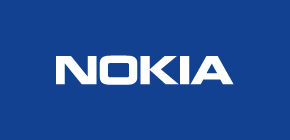There are few people who are unfamiliar with the brand name Nokia. Chance are that if you ask your parents about their first handset, it would be a Nokia. Synonymous with mobile phones in India, and around the world, the company has undergone massive changes in its long history. How many of you knew that Nokia’s history goes all the way back to the 1850s? Here’s a look at the story of Nokia, and how one man’s idea changed the way the world communicates.
About the Founder
Nokia became what it is today, because of the effort and dedication of Fredrik Idestam. The founder of Nokia was born in Tyrväntö, Finland in 1838. While there isn’t much information regarding his education, we do know he was a mining engineer. Though an engineer, Idestam decided to start his own paper factory, and in 1865, set up a plant in Tampere.
Art of Paper-Making
Idestam chose to go into this field because, at the time, Europe had high for paper. Also, Idestam was responsible for bringing fresh technology to the field of paper-making in Finland. His innovative methods came from revolutionising the industry in Finland which used fabric. The new technology came from Heinrich Voelter who utilised wooden raw materials and Idestam introduced this idea in Finland. He called his company Nokia and started making paper in 1865.
A community living in southern Finland inspired Idestam to name his company Nokia. The company’s first factory came up near the Tampere waterfall in 1866 and derived power from the waterfall. The presence of abundant timber nearby made it easy for the plant to acquire raw materials. The rise in demand and the use of new technology helped the company grow exponentially. In 1871, Idestam and Leo Mechelin expanded to Finland and officially created Nokia Ltd. This company became the largest paper manufacturer in Finland and soon started exporting products to the rest of Europe.
Expansion and Merger
Idestam passed away in 1916, leaving Nokia in the hands of a successor. Until World War I ended, this company remained a paper manufacturer and soon after it entered the electricity business. The Finnish Rubber Works later acquired Nokia, and it started manufacturing cables and telegraph lines. In 1967, the merger of three different companies led to the formation of the Nokia Corporation. At this stage manufactured several products such as car tires, rubber boots, cables and even televisions. In 1960, a formal cable division came to be, and later an electronics division, which in later years, became the company’s face.
Networking Giant
By the 1970s, Nokia became a network equipment powerhouse developing switching products. They joined forces with Salora to build automatic cellular phone systems, eventually acquiring the company in 1984. In 1987, Nokia launched the Mobira Cityman 900 which became an instant hit. The Mobira Cityman 900 became iconic when Mikhail Gorbachev used it to make a call in 1987, earning the nickname “The Gorba”. The company helped in the development of the GSM 2G and delivered the first 2G system in 1989. In 1992, Nokia launched the first GSM phone, the Nokia 1011, and the mobile phone landscape was never the same again.
Global Leader
In later years, the company branched out and developed CTRs, LCDs for laptops. They also released a mini laptop, which they discontinued after a short while. But the company will always be known for its mobile phones which were sold in over 130 countries. The Nokia 2100 series, which was the first to feature the Nokia ringtone sold over 20 million phones, making it one of the most recognisable models of all time. During the late ’90s and early 2000s, the company’s turnover rose from €6.5bn to €31bn.
They followed it up with the spectacular Nokia’s 6100 series which sold over 41 million phones in 1998. The same year Nokia surpassed Motorola to become the world’s top mobile phone manufacturer. The Nokia 6110 was also the first phone to have the game Snake pre-installed.
While mobile phones are a trend now, and everyone has different models to brag about, it wouldn’t have been so if not for Nokia. The company helped make cellular phones popular and was for decades the world’s largest mobile phone manufacturer. In 2014, Microsoft acquired Nokia, ending the legacy established by Idestam. While it had less success later, due to tight competition, a paper company from Finland changed the telephone industry for the better!

Being a cinephile with a love for all things outdoorsy, Athulya never misses a chance to chase inspiring stories or poke fun at things, even when the subject is herself. Currently pursuing a degree in mechanical engineering, she is someone innately interested in technical and scientific research. Music reviews and op-eds define her as they allow her to explore different perspectives. Though sometimes she thinks she makes more sense playing the guitar than she does while writing.
